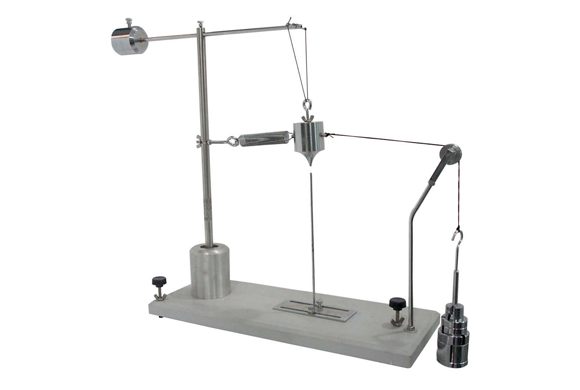
Principle and Working:
It consist of a hanging mass supported from a cross arm attached to a vertical shaft. The cross arm is counter balanced by having mass. An vertical rod can be adjusted on the base as a radius vector. A ball bearing pulley mounted on a rod on the base is used for measuring the force exerted by a spring with which mass is coupled to the shaft.
...
By knowing the mass, the speed of rotation and the radius, the centripetal force can be calculated. A photogate sensor is used for measuring rotation time during experiment.